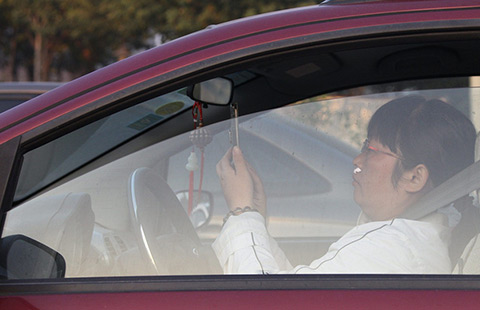Middle-class Chinese snap up overseas luxury
By LIN JING and CHEN YINGQUN (China Daily) Updated: 2013-01-23 00:01An increasing number of middle-class Chinese are buying luxury goods outside the Chinese mainland, with more overseas travel driving the trend, a KPMG report said on Tuesday.
Seventy-one percent of survey respondents ― middle-class mainland residents ― traveled overseas in 2012, compared with 53 percent in 2008. And 72 percent of them said they bought luxury items during such trips, with cosmetics, watches and handbags being the most popular items.
Brand recognition continues to rise as consumers become more discerning and seek experiential luxury as well as one-of-a-kind luxury brands and products. Respondents said they recognize 59 luxury brands, from 45 in survey conducted in 2010.
The report ― The Global Reach of China Luxury ― is based on a survey of 1,200 middle-class Chinese consumers in 24 cities. Market research firm TNS conducted the study.
Respondents were 20 to 44 years old, with a minimum household income of 7,500 yuan ($1,205) a month in tier-one cities and 5,500 yuan elsewhere.
Chinese consumers associate certain countries with particular products. For example, Switzerland is recognized for its luxury watches, while France scores highest for cosmetics and perfumes.
Nick Debnam, KPMG's Asia Pacific chairman in consumer markets and the author of the report, said the growing number of Chinese people traveling overseas is a result of the emerging middle class and easier travel arrangements.
"What we are now seeing is that the brands which are well positioned in China are receiving a boost in overseas markets from the emergence of a surging new class of traveling and well-off Chinese consumers, who typically have strong spending power and a great interest in luxury," he said.
China has become a focus of the luxury industry in recent years, and the travel and spending habits of Chinese consumers are also reshaping the luxury goods market, Debnam said.
Pascal Armoudom, an expert with A.T. Kearney Management Consulting Co Ltd in Shanghai, said Chinese consumers are playing an increasingly important role in the global luxury market.
"Brands like Louis Vuitton or Gucci do have about 30 percent of their sales made by Chinese consumers. Regarding China's native consumers, and based on available data, luxury purchases overseas should be around 55 to 60 percent of the total," he said.
"With high taxes on luxury products sold in the domestic market, consumers can save 30 to 50 percent when buying in Europe or the United States," said Armoudom.
Lower prices aren't the only incentive to buy overseas ― the shopping experience is also unique.
"In luxury watches, a few rich Chinese travel to Switzerland and directly buy in the brand's headquarters or factory after having visited the site and talked to the staff there."
Debnam said that as the number of Chinese traveling abroad continues to rise, international and local brands need a global strategy for Chinese consumers in both locations.
"Brands need a strong market position in China and overseas so that Chinese customers can find their products easily," he said. "For example, in clothing, the Asian cut is quite different from the European cut, and you need to carry the right cut to make the sale."
Meanwhile, Armoudom said, pricing policies will become a major issue that needs to be handled carefully.
"The main risk is to manage a global price consistency to keep Chinese shoppers from becoming frustrated if they notice lower prices in location A for an item which they already bought at a higher price in location B," Armoudom said.
Contact the writers at linjingcd@chinadaily.com.cn and chenyingqun@chinadaily.com.cn
- Volvo sales drop defies surging luxury sector
- Drink king's new tonic: luxury on tap
- Corruption curbs crimp luxury market
- Report: Wealthy still lavish luxury on friends, colleagues
- Luxury goods' prices rising in the mainland
- Beijing's luxury apartments prices to see limited growth next year
- Liquor firms hung over from luxury dinner ban
- Little luxuries for well-seasoned travelers
- Shanghai adopts measures to control surging home prices
- Chinese railway builders help locals along African railway
- Highlights of Barcelona Games World Fair
- China biggest Dubai trade partner in H1 2016
- Chinese steel won't impact EU market: official
- Virtual reality industry boost in SW China
- Home price curbs expected to spread
- Shanghai, Beijing release draft rules on car-hailing services


















